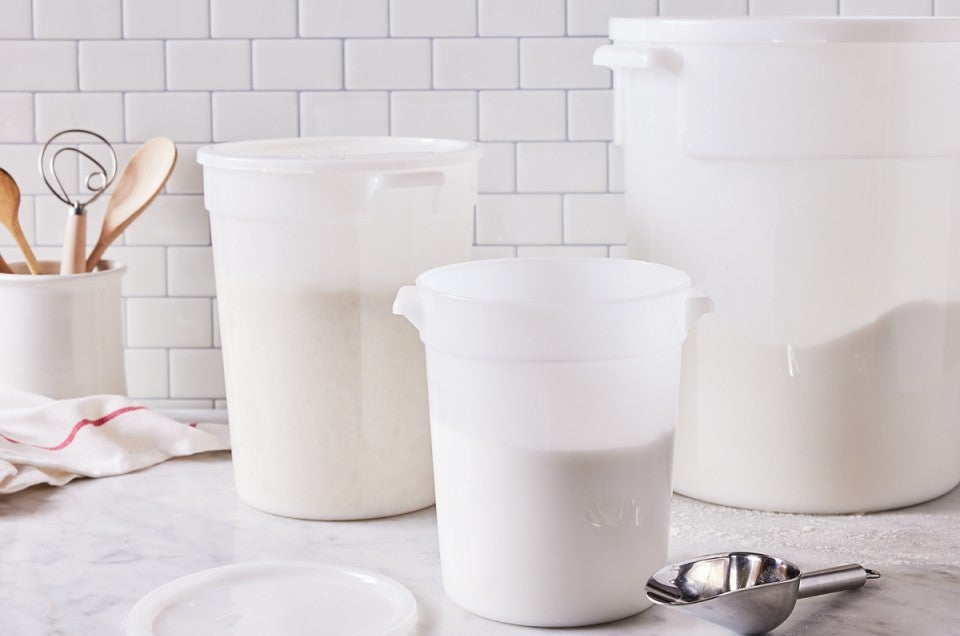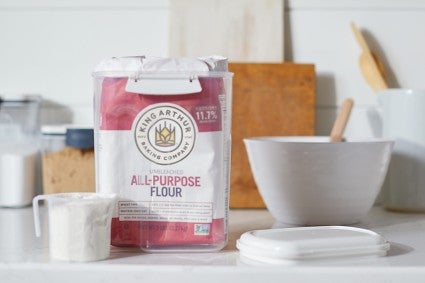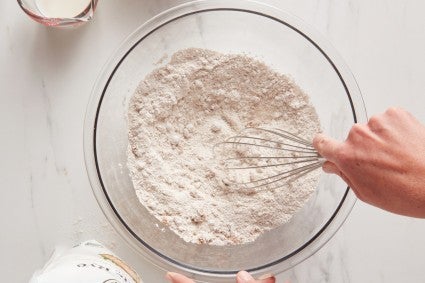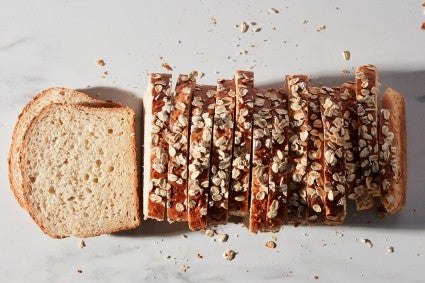What’s the best way to store flour?
Ensure your flour is always fresh with these best practices.


 The bakers of King Arthur are here to solve the kitchen conundrums you share with us, whether it’s on the phone, computer, or by the good old postal service. In Ask the Baker’s Hotline, Annabelle will pick the brains of the talented King Arthur Baker’s Hotline team to tackle some of your most-asked questions. Today’s query: flour storage.
The bakers of King Arthur are here to solve the kitchen conundrums you share with us, whether it’s on the phone, computer, or by the good old postal service. In Ask the Baker’s Hotline, Annabelle will pick the brains of the talented King Arthur Baker’s Hotline team to tackle some of your most-asked questions. Today’s query: flour storage.
* * *
If you’re an occasional baker, there’s a good chance you’ve had some flour sitting around in your pantry for quite a while.
But unlike, say, sugar, flour doesn’t last for years. When any flour goes bad, the oils become rancid and smell a bit like Play-Doh, and that smell and taste translate to your baked goods — not ideal.
Keeping flour fresh all comes down to proper storage. Whether you don’t reach for it often or you like to stock up for a rainy day, Maranda from our Baker’s Hotline has the tips and tricks you need to keep your flour fresh for as long as possible.

The paper bags that flour comes in are made of breathable material that allows any remaining moisture from the milling process to evaporate and is great for recycling (yay!) but doesn’t protect well against things like moisture and heat, which can encourage spoiling. So once you get your flour home (including gluten-free flour!), dress it in its anti-spoilage armor: an airtight container or bag.
“You want one to two extra layers to protect your flour from outside moisture, permeating odors, and heat to prevent it from spoiling prematurely,” Maranda says. “It could be something as simple as sliding your bag of flour into a large resealable bag or a Lock-Top Flour Container.”
An added bonus to this style of container: The bag’s best-by date is accessible if you need to check it. If you prefer to decant your flour into a glass canister or other container, cut this information from the bag and tape it to the bottom for safekeeping.
What if you need to store larger quantities of flour? “If you’re a nonstop baker like I am, you may want to go with something bigger like a Large Flour Bucket, which can hold up to 25 lb. of flour,” recommends Maranda. “If you want an extra layer of protection, line the bucket with an unscented food-safe bag you can clip shut before closing the lid. You could also place a single layer of plastic wrap on top of the bucket before securing the lid closed,” she advises.
Maranda has one final reminder: “Once you’ve got your flour stored (no matter the container), you’ll want to keep it in a cool, dark place, since warmth and light speed up the spoilage process.” For long-term flour storage, keep it in your freezer to extend its shelf life.

Whole grain and nut flours contain fat: from the germ in the case of whole grain flours, and the nut itself in the case of nut flours. When the fat is exposed to oxygen during the milling process, it begins to oxidize; as a result, these flours will always have a shorter shelf life than white flour.
The solution? Freeze! No, not you, keep reading, but freeze your flour! If you don’t plan on using your whole grain or nut flour before the best-by date, put it in a plastic bag (an airtight container works too, it just takes up more space), and stick it in the freezer until you need it. Check out PJ’s blog that dives deeper into whole grain flour storage: The best way to store whole grains.
“If you don’t have space in the freezer but have some room in your fridge, you can keep flour fresh there as well,” Maranda shares. Avoid your flour absorbing moisture or refrigerator odors by keeping it in an airtight container.
You can pull flour out of the freezer for a few minutes to warm up if you want to, but once it’s mixed with other ingredients, it likely won’t make much of a difference. If you’re making yeast bread and don’t want cold flour to affect fermentation, determine your desired dough temperature to adjust your water’s temperature accordingly. Or simply wait for your flour to come to room temperature before mixing into doughs for yeasted or sourdough breads.
Even though you’ve done everything to keep your flour airtight and protected from the elements, you can still potentially run into issues with pests later on. To avoid, follow this tip from PJ Hamel in her whole grain storage blog: “Four days in the freezer effectively kills any existing pests and/or their offspring, preventing potential insect issues down the road.”

Of course, the best defense against stale flour is to bake more often! From easy meals to kid-friendly bakes to recipes made with five ingredients or fewer, we have a recipe collection for just about any situation. If you want to know some of our favorite things to bake, don’t be afraid to call Maranda or the other helpful members of the Baker’s Hotline for a hot tip.
For storage solutions ranging from flour to sugar and more ingredients, see the “storage” section of our Shop.
Cover photo by Kristin Teig; food styling by Liz Neily.


